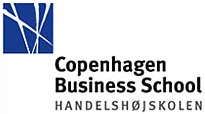No 01-2005: Forskellige scenarier for den luftbårne trafik til og i Grønland
Lars Lund
Additional contact information
Lars Lund: Department of Economics, Copenhagen Business School, Postal: Department of Economics, Copenhagen Business School, Solbjerg Plads 3 C, 5. sal, DK-2000 Frederiksberg, Denmark
Abstract: The paper defines a base model of the airborne passenger traffic to and in Greenland showing the number of passengers on every non-stop connection. The type of airplane is defined for each route, and that determines the flying time. The number of connections and capacity utilization are fixed with due regard to the timetable of Air Greenland and the density of traffic on each route. Assumptions as to the cost per hour as a function of the duration of the flight are made for each aircraft. Applying this to different investment scenarios for airports and landing strips an index for the costs of supply of air traffic is found. Using this index the supplier’s cost savings in the scenarios are found as a percentage of the relevant sale. A number of reports from recent years have information about the necessary investments in the scenarios, and matching these with the changes in costs permits the calculation of present values for the different projects. Apart from direct savings there are derived benefits in some of the scenarios the most prominent being the possibility to abandon Kangerlussuaq. The calculations include these indirect effects. Two scenarios have high present values: the use of Keflavik as hub, and the construction of a new airport with a 3000 meter runway south of Nuuk: two rather different scenarios, the first dominated by current savings, and the second dependent on a large fixed investment.
Keywords: None
JEL-codes: H00
48 pages, September 12, 2006
Full text files
7526
- Copenhagen Business School, Department of Economics
- Ordering Working Papers
- Home page for this series
Questions (including download problems) about the papers in this series should be directed to CBS Library Research Registration Team ()
Report other problems with accessing this service to Sune Karlsson ().
RePEc:hhs:cbsnow:2005_001This page generated on 2024-09-13 22:14:19.

